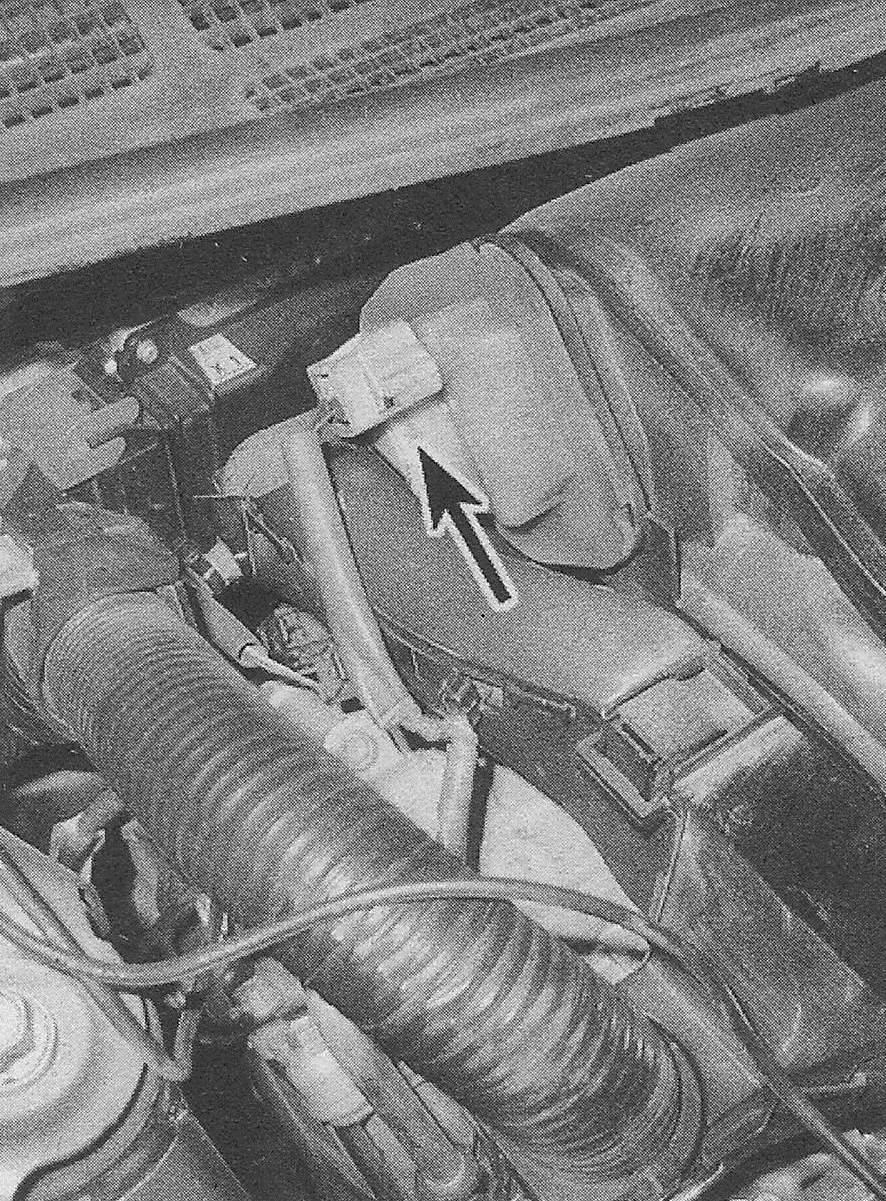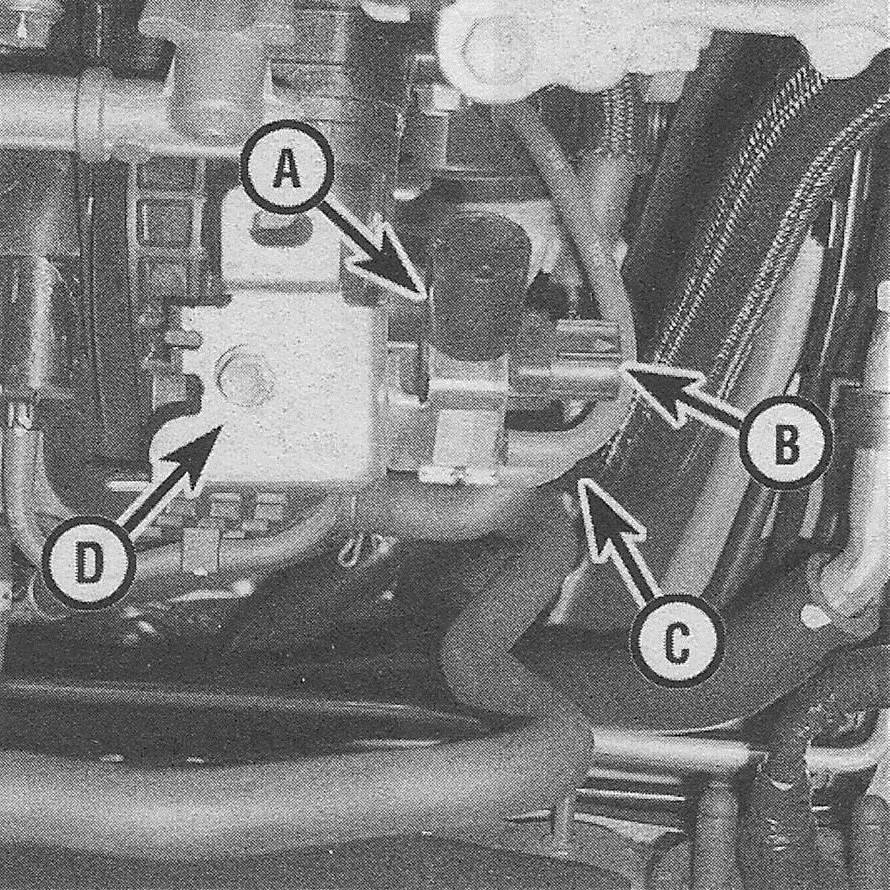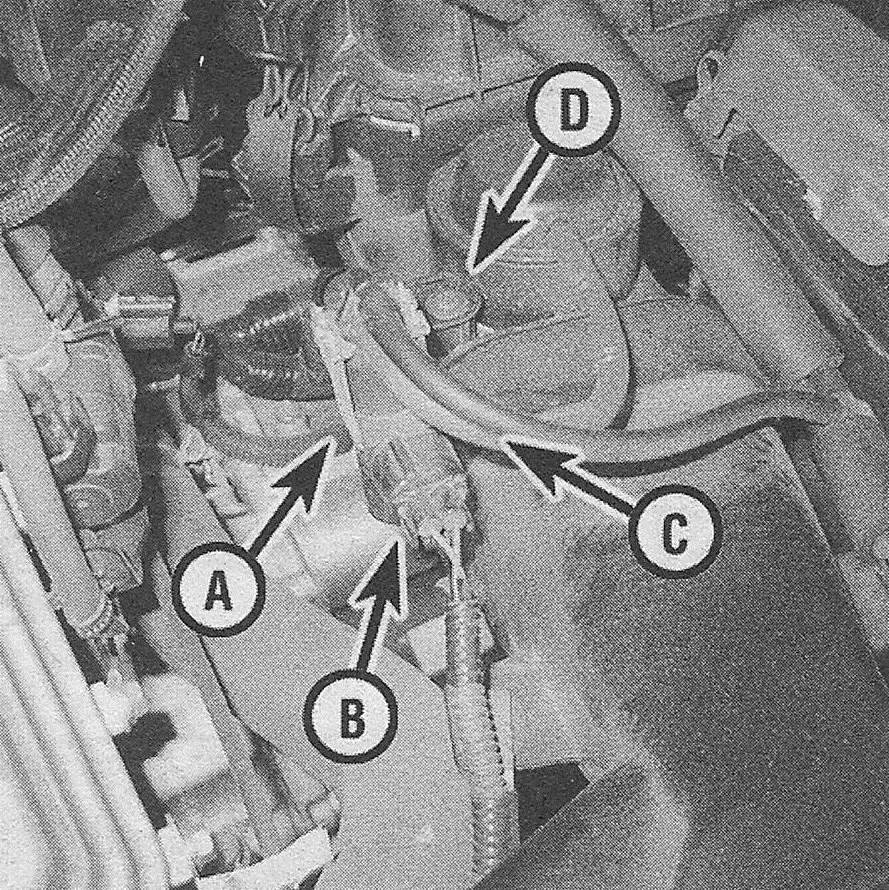Acoustic Control Induction System (ACIS) — description and component replacement
Description
1. The PCM-controlled Acoustic Control Induction System (ACIS) varies the effective length of the intake manifold runners in response to engine speed and the angle of the throttle plate inside the throttle body. This capability increases efficiency and power at low and high speeds.
2. The ACIS consists of an ECM-controlled Vacuum Switching Valve (VSV), an actuator, a vacuum tank (four-cylinder models) and an intake air control valve. The VSV is an ECM controlled-device that controls the intake vacuum applied to the actuator. The actuator is a vacuum diaphragm that uses a pushrod and bell crank to open and close the intake air control valve. The vacuum tank (four-cylinder models), is an integral part of the intake manifold, used to maintain a constant source of vacuum to keep the intake air control valve closed during deceleration (low vacuum). The intake air control valve, which is an integral part of the intake manifold, opens and closes to alter the effective length of the intake manifold runners in two stages. On four-cylinder models, there is one large intake air control valve for all four intake runners. On V6 models, there is one large intake air control valve for all six intake runners (see illustration).
19.2 Intake air control actuator location — V6 models

3. At low-to-medium speeds, the PCM activates the VSV, sending vacuum to the actuator diaphragm. The actuator closes the intake air control valve, increasing the length of the intake manifold and improving intake efficiency.
4. At higher speeds, the PCM deactivates the VSV, cutting vacuum to the actuator diaphragm. The actuator opens the intake air control valve, decreasing the length of the intake manifold and improving engine power.
Component replacement
Note: The actuator, vacuum tank (four-cylinder models) and intake air control valve are integral components of the intake manifold. If any component fails, replace the intake manifold (see Four-cylinder engines or 2B). The VSV is the only component that you can replace at home.
Note: On four-cylinder models, the VSV is located at the left end of the intake manifold and is accessed from below. On V6 models, the VSV is located at the upper right rear corner of the intake manifold.
5. Remove the engine cover.
6. Disconnect the electrical connector from the VSV (see illustrations).
19.6a Acoustic Control Induction System Vacuum Switching Valve (ACIS VSV) from the intake manifold — four-cylinder model
A Vacuum Switching Valve (VSV)
B Electrical connector
C Vacuum hoses
D Mounting fastener

19.6b Acoustic Control Induction System Vacuum Switching Valve (ACIS VSV) from the intake manifold — V6 model
A Vacuum Switching Valve (VSV)
B Electrical connector
C Vacuum hoses
D Mounting fastener

7. Clearly label, then disconnect both hoses from the VSV.
8. Remove the VSV mounting bolt and remove the VSV.
9. Installation is the reverse of removal.